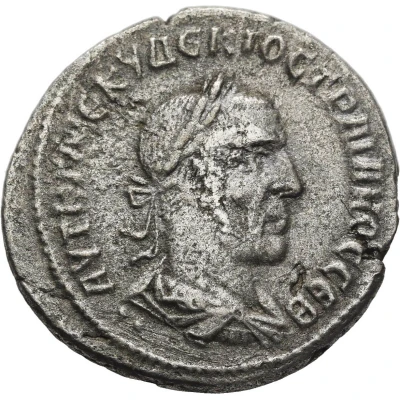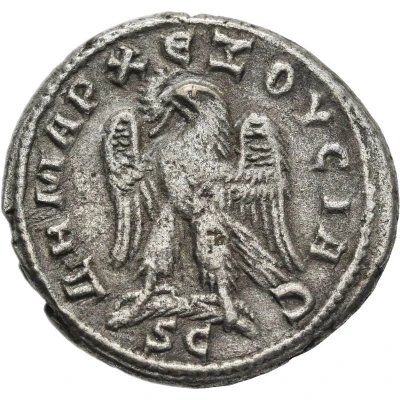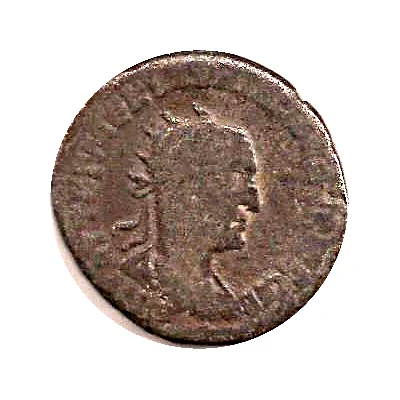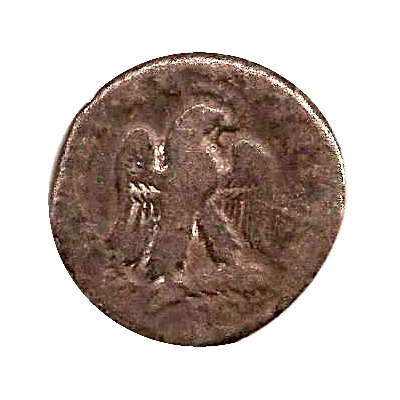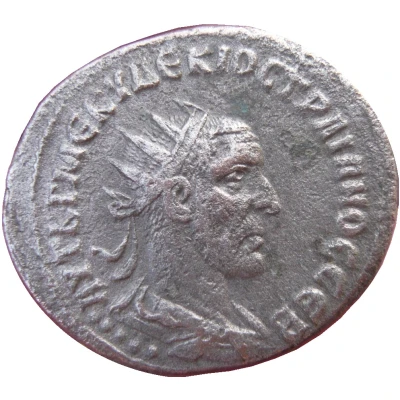
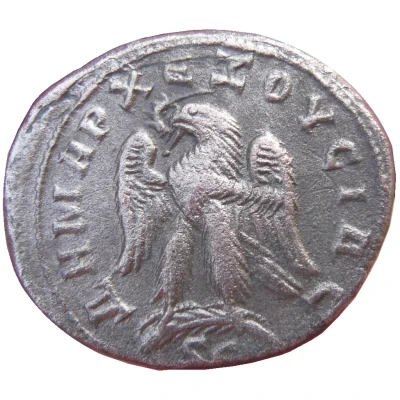

© Darkcid
Tetradrachm - Traianus Decius Antioch
| Silver | 11.38 g | 27 mm |
| Issuer | Antioch on the Orontes (Syria Coele) |
|---|---|
| Emperor | Decius (Gaius Messius Quintus Traianus Decius) (249-251) |
| Type | Standard circulation coin |
| Years | 249-251 |
| Value | Tetradrachm (4) |
| Currency | Drachm |
| Composition | Silver |
| Weight | 11.38 g |
| Diameter | 27 mm |
| Shape | Round (irregular) |
| Technique | Hammered |
| Orientation | Coin alignment ↑↓ |
| Demonetized | Yes |
| Updated | 2024-10-06 |
| Numista | N#74068 |
|---|---|
| Rarity index | 95% |
Reverse
Eagle standing on palm, left, spreading wings, holding wreath in beak
Script: Greek
Lettering:
ΔΗΜΑΡΧ EΞΟΥCΙΑC
S C
Comment
The bulk of Trajan Decius's issues are titled with his name (Decius) and adopted nickname (Trajan). These issues are spread over two years, distinguished by the name/surname order in the titulature. We know the order by comparison with the Alexandria issues, where the same inversion occurs in the titulature, but where the strikes are dated (1st or 2nd year).As with the inaugural issues, the ANTIOXIA exergue of Philip's 3rd and 4th consulates disappears and is replaced by the palm, in use before Philip's third consulate. Should we deduce from this that the financing of the issues changed and reverted to the provincial authorities, whereas they would have been assumed by the city during Philip's 3rd and 4th consulates? It should be remembered that Philip's brother Priscus, installed in Antioch throughout the reign with full powers (including the title of Rector Orientis!), had perhaps obliged the city to finance the currency issues; with the source of his power gone (we don't know how it ended), we can imagine that the city got rid of the burden, which thus fell to the new provincial authorities, only too happy to demonstrate their allegiance to the new power by issuing currency in his effigy.
The choice adopted in the Prieur, to set all the individual busts apart, whatever their officia, makes it difficult to read the issues and would no longer be adopted today, in favor of a classification by officia.
Indeed, if the typical laurelled, draped and cuirassed bust predominates, the engraving logic of exceptional busts can only be perceived in terms of their presence or absence in officines. This reclassification needs to be made.
Note that sigmas are engraved in C.
In the TSP database maintained by Michel Prieur, seventeen examples of this type are now listed, nine of which are in museums, in Paris, ANS (2), Berlin, Gaziantep, Oxford and Dura/Yale (3).
Interesting fact
One interesting fact about the Tetradrachm - Traianus Decius (Antioch) (249-251) coin is that it features a unique blend of Roman and Greek influences in its design. The obverse side of the coin depicts the Roman Emperor Traianus Decius, while the reverse side features the Greek goddess Tyche, who was revered as the protector of the city of Antioch. This blending of cultural influences reflects the rich history of the region and the cultural exchange that occurred during the Roman Empire.
